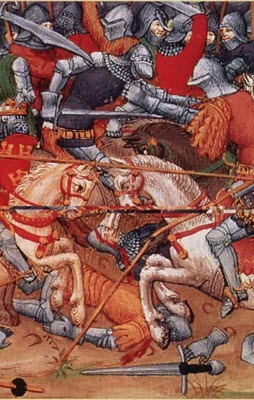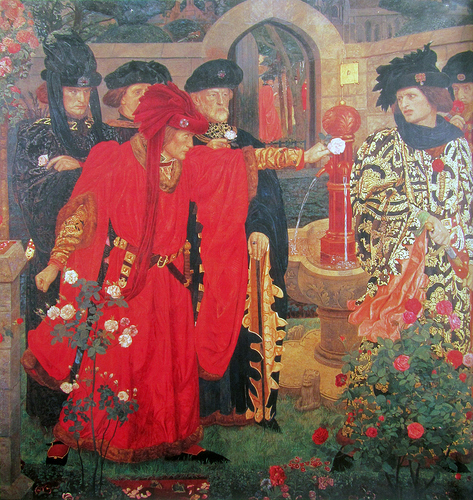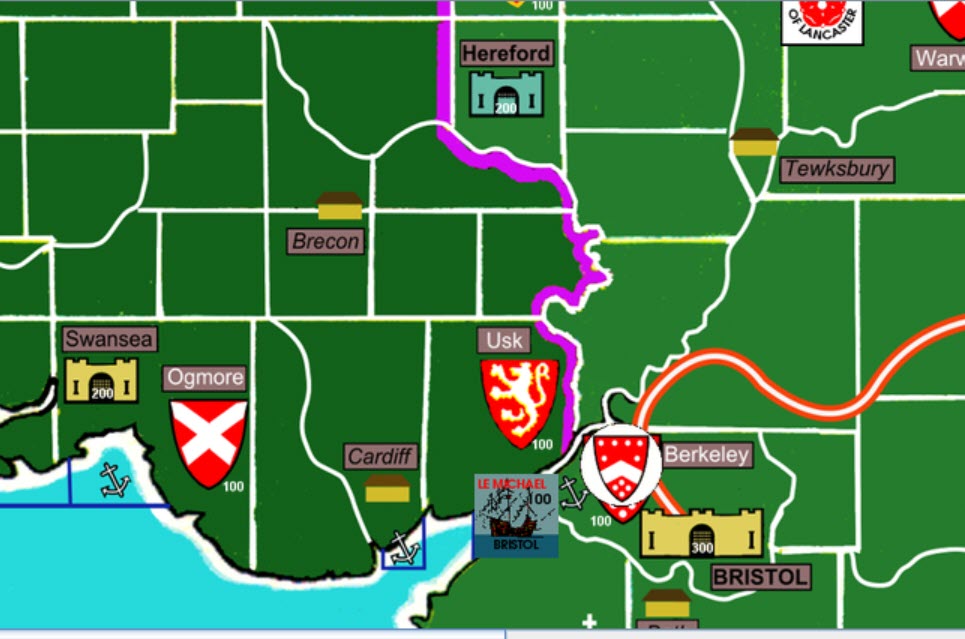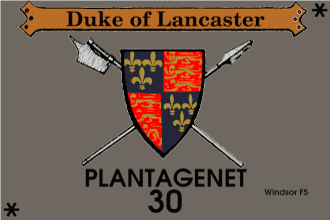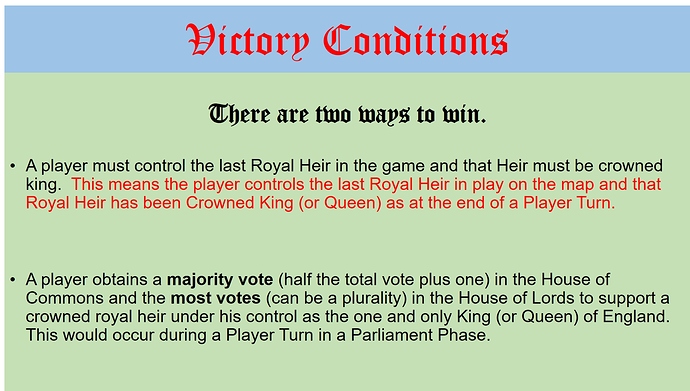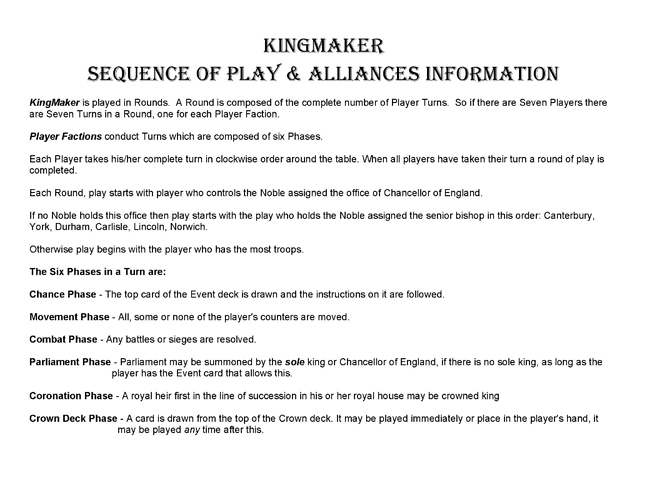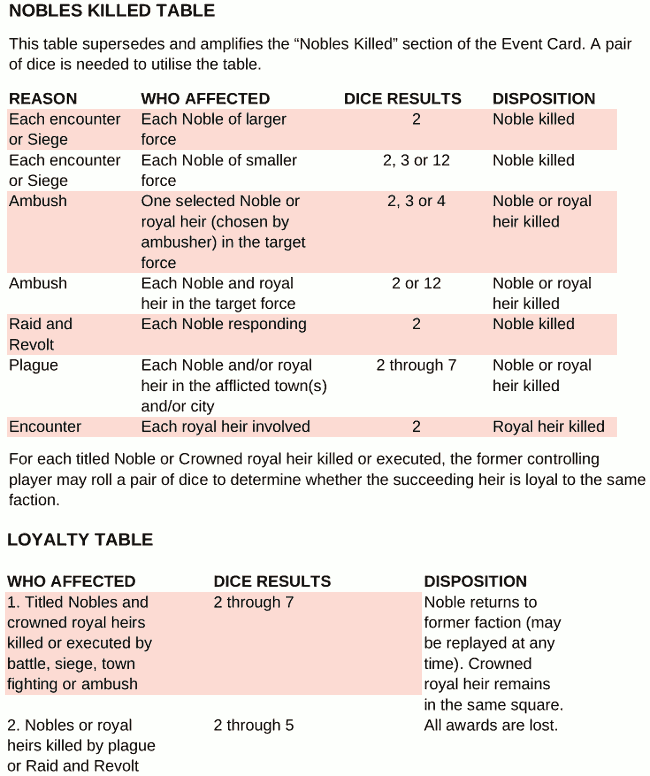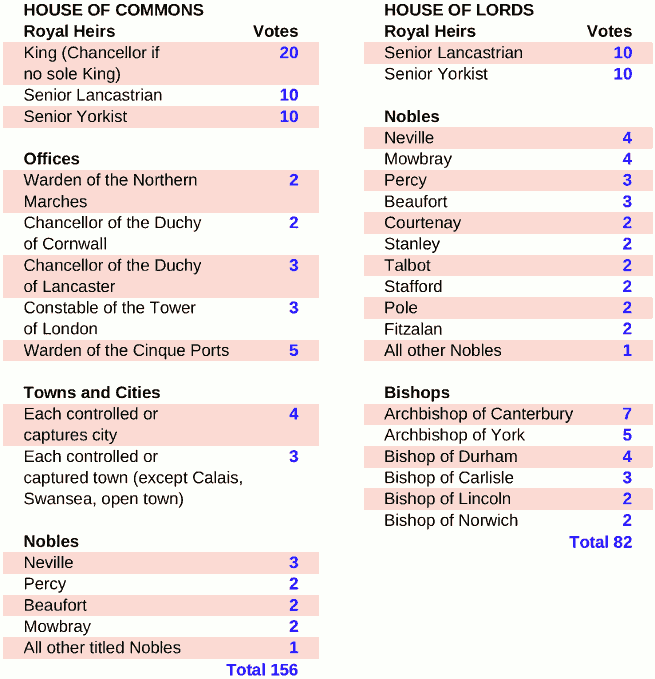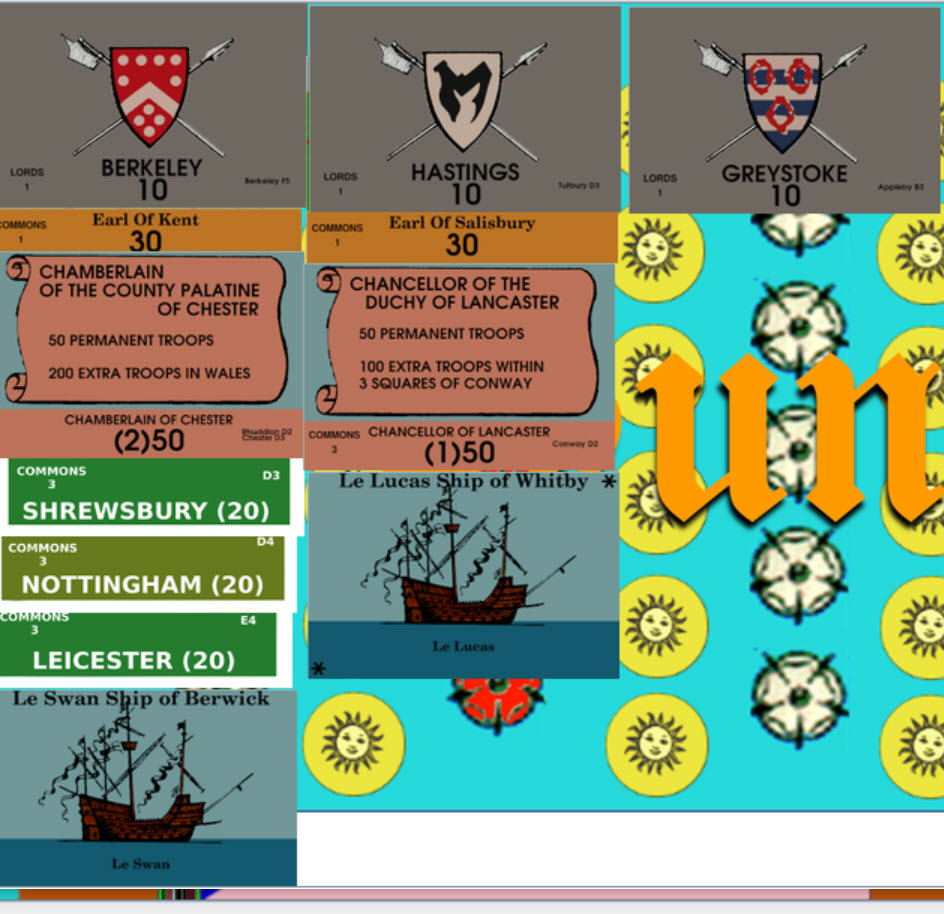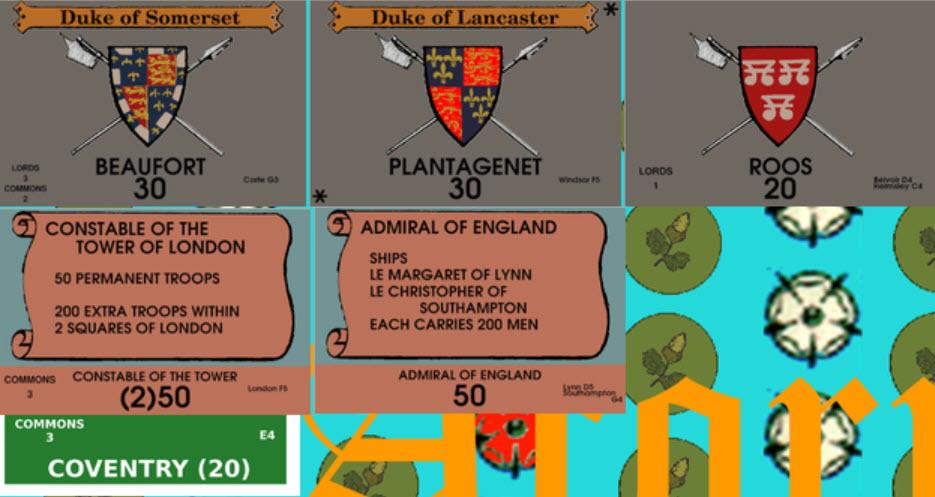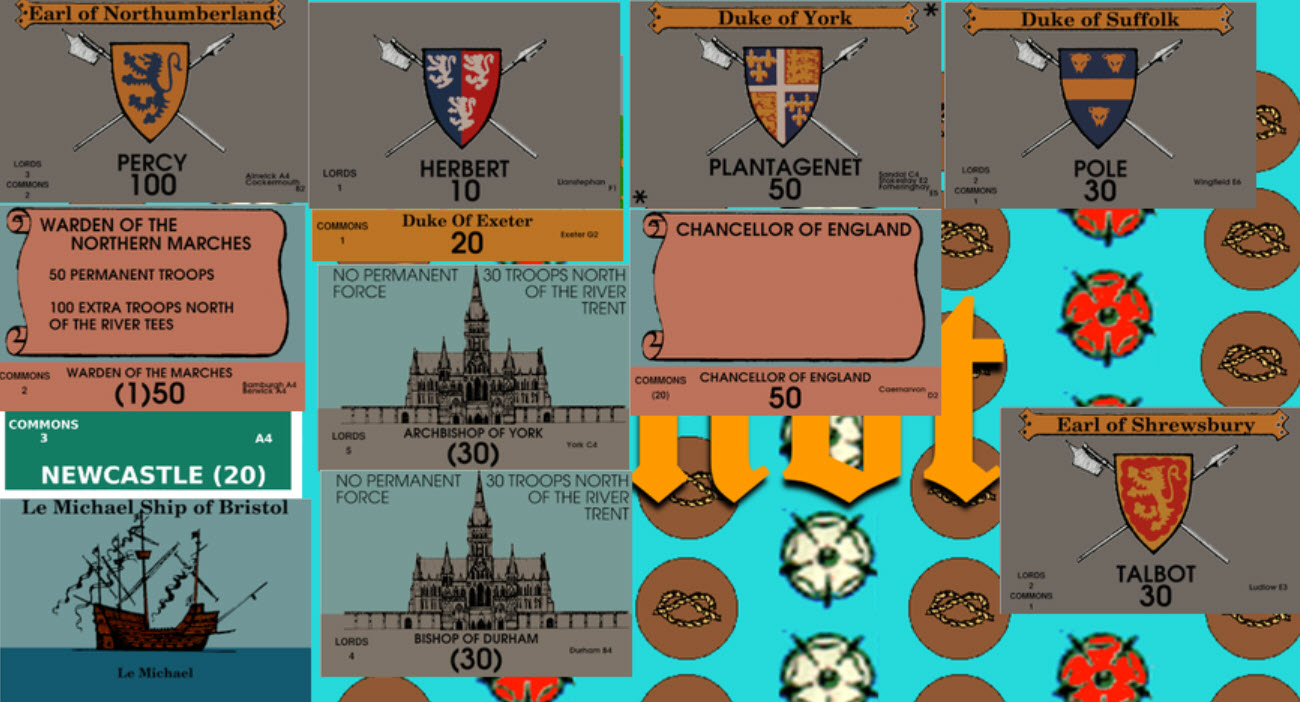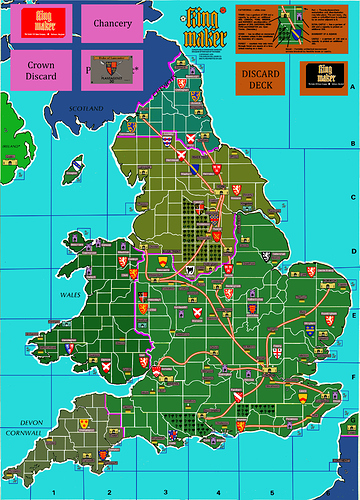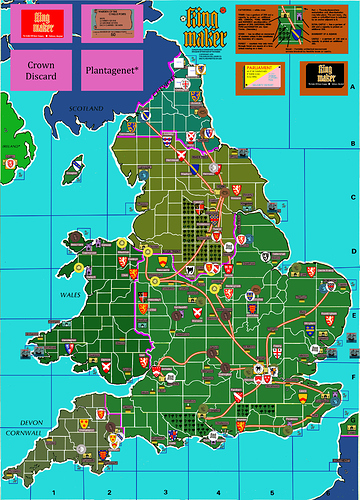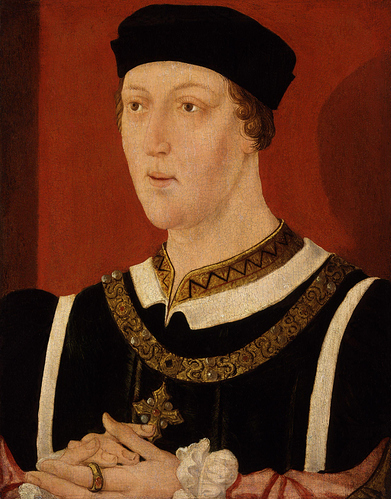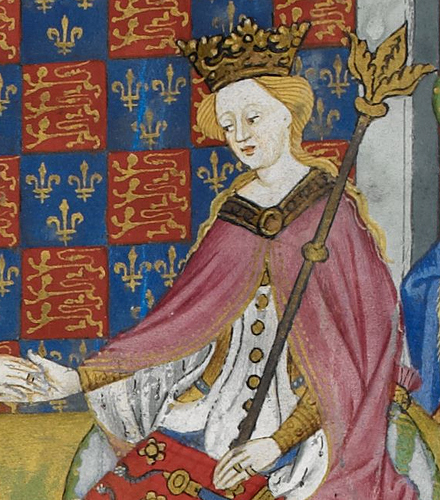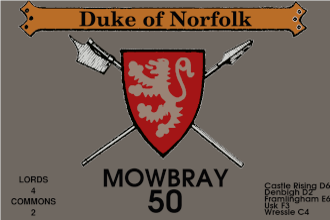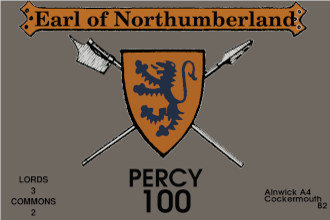Game Primers - Quick “How To’s” and PBF Rules and Protocols and Whatnot
Movement Primer
This is the first in a series of Primers that I’ll post from Time to Time. I’ll eventually delete Primer Posts and move the contents upthread to the Reference section.
Normal Movement - A Noble may move up to Five Spaces. Entering a Forest Space ends a Move. A Group of Nobles starting together may move as a Group, if desired.
Road Movement - Any Noble, or a group of Nobles starting together, may move along a road as far as they desire. They must stop if they enter a Space with a Town or Castle that is nuetral or controlled by another faction. They are then in that space, outside the Walls, essentially. Note that neutral Noble Castles (the little shields) do not impede Road Movement (the map above hasn’t/won’t mark Castles owned by your nobles with faction markers to keep clutter down and improve visibility. The Shields should suffice. If it becomes important, I may mark ones on roads…we’ll see…).
Sea Movement - A ship may move up to 5 squares in a turn. A ship may stay at sea unless forced into port by an Event card. A ship’s movement may not be blocked while at sea. It may never move over land but may enter a friendly or unfortified port. A port is counted as a separate square in movement.
A ship may move along an estuary to reach a port. A ship may never enter an unfriendly or neutral port unless ordered there by an Event card or when attempting to besiege it with her passengers.
A ship that occupies or involuntarily enters a neutral port may leave in its turn. A ship that occupies or involuntarily enters an unfriendly port may leave only with permission of the player controlling the port.
Note that all sea areas that look contiguous are contiguous. Except Scotland. Ships kenna sail around Scotland via the North, laddies.
Sea Transportation - To embark a Noble counter, a ship must occupy a friendly or unfortified port… A ship may embark any Noble counter(s) which occupy the square in which the port is located at the start of her move. The ship then immediately moves out to sea carrying the passengers on board. The troop strength of the Noble(s) traveling on a ship at sea can never exceed the carrying capacity of the ship, printed on the ship’s counter. The troop strength of Noble(s) can be split between two or more ships as long as they, travel together.
For a ship to voluntarily enter and disembark Noble counter(s) in a neutral or unfriendly port her passengers must participate in a siege of the port.
Passengers of a ship who involuntarily enter a neutral or unfriendly port must attempt to siege the port. If unable to siege this port then they must disembark from the ship and remain in the open.
Noble counter(s) cannot stay aboard a ship at port. They must disembark at the beginning of the next turn or leave the port.
A ship may embark Noble counter(s) only at the start of its move. Disembarkation of passengers ends its move. Royal heirs may accompany nobles to sea.
A ship whose Crown deck card is returned to the Crown deck or which changes ownership while carrying passengers remains under the control of the previous owner until it next touches port.
Play-By-Forum Primer
References
The first few posts of the thread will always have game reference materials: A Blank map for reference with a terrain key, the charts, rules and other Sundry items. More will be added as necessary to include the sequence of play.
One of the Top Posts will always have the Current Situation Map; a map with all the pieces as things stand.
The Faction Status Post will always have all current factions: the cards as assigned to various nobles, updated when necessary by me. This is open information to all p[layers
Moderator Role and Game Play
All Event or Crown Deck Draws will be done by the Moderator and sent via PM to the Player, if needed, or played in Channel here. Only held cards by players are private information in this game.
Any necessary die rolls will be done by the Moderator. I may do it in Vassal, I may use orkos, I may delegate it. Whatever speeds things up the most.
Discards, Other Card Stuff - The Event Discard Deck may never be examined. The Crown Card Discard Deck may never be examined. The Chancery (a Special Discard Deck for Offices, Titles and Bisoprics) may never be examined, though, once Setup is completed, everyone will be able to take not of what is put in there… The Game uses event Card draws for combat and other functions. For ease of play, I will not display excess cards (sometimes you need to keep drawing until a relevant card is drawn). Also the event Deck is shuffled each time an Embassy card is drawn as an event, anyway. The game, in its rules, is tough on all you card counters out there. This ain’t Blackjack.
Communications
Any and all private negotiation between players is encouraged and essential to the game. I encourage that you cc me on communications with others from time to time to aid the alternate history narrative-aspects of this PBF, but it isn’t essential if you forget.
All player moves or actions will be announced in thread.
Player Turns, Protocol and Etiquette
Regarding Diplomacy - Time Waits for No One. By this I mean that Diplomacy should be ongoing. Players’ turns and movement/combat will not be delayed by a “Wait, I’m waiting on the Pumpkin faction to move with me/agree on the Duke of Hossenpfeffer to be the Commander” Post. Alliances should have that stuff figured out.
Checking in – everyone, even when its not your Turn, should be checking in regularly to see what the game situation is. Which leads to…
The Aunt Hildegard Rule – If Aunt Hildegard is visiting, you’re driving the Kids to Summer Camp, there has been a major flood in the House, or you’ve been selected to be a Sushi Chef Trainee and will be out of pocket for your turn, let me know and provide me with instructions on what to do for your turn. Really, Movement and Combat are the only things you need to make active, considered decisions about in a timely fashion. And the game isn’t filled with reactive, ping pong decisions, so you should know when your turn is coming up. Which leads to…
The “Sweating Sickness” Corollary – If you are due to do your turn, and you do not respond in a 24 Hour period, I will do your turn, but all Movement, Combat and other voluntary active decisions (Crowning an Heir in the Coronation Phase; calling a Parliament, etc.) will be on hold as your Faction deals with the Sweating Sickness. Events will be drawn, implemented and held cards stored in your hand. The same goes for Crown Card Draws, they will be held in your hand and played later, when you can chime in/provide guidance. But we need to be aware of…
The Parliament in Session Exception – Parliament in session is a very separate beast, game-wise, and slows down the action. Votes and Roberts rules-y stuff will happen, as it has a very different pace. So, we’ll cross that bridge when we come to it.
Combat Phase Primer 1
Battle Primer
Any Group of Nobles from a Faction or from Allied Factions (in any of their Player Turns) may Attack any other Group of Nobles that are in the open if they are in the same area in a Combat Phase. If the attacking Nobles are from more than one faction a Noble must be selected as Commander beforehand. The Attacking group of Nobles must outnumber the defenders, or they cannot attack.
Note that any Noble may only engage in any Combat Phase Action (Battle, Siege or Storm, Ambush or Sea Combat) one per Game Round.
Odds are determined on the Combat Odds Chart.
Event Cards are drawn until one with a Combat result (Pink Background on Half) is the chosen card.
If the Odds on the card are less than the Odds found on the table, the Attackers win.
If the Odds on the card are equal to or greater than the odds found on the table, the Battle is Indecisive.
If the Card says “Majority Victory” the side with mostest wins-est.
If the Card says “Bad Weather Delays Attack” then nothing happened, and the Attack produces no result. This counts as a Combat Phase Action for all Nobles attempting the Attack.
Any Nobles on the Event Card who participate in the Battle are dead. If the Card says “Use Nobles Killed Table” I have to roll on that table to see who dies.
Here is an Example. In our example The Boar Faction (@Panzeh) and The Staff Faction (@David2) are Allied. The Staff’s Earl of Devonshire and the Boar’s Duke of Norfolk are together in Boar’s Combat Phase due west of Salibury. The decide to attack The Acorn’s (@CraigM) Duke of Somerset. Staff graciously accepts that the Duke of Norfolk is the Commander (He’s the big dog on that side) before the attack is announced.
The Factions:
So the Boar-Staff Army has 170 Knights and Men at Arms. Poor Somerset only has 100. If he was within two spaces of London he’d have 300 Men and he might be the stabby one in his Combat Phase,and the Boar-Staves couldn’t attack him now. But he ain’t, so he don’t have ‘em, Guv. If he was north of the River Trent, he’d have 30 more men. Again, he ain’t. So we have 170 Attacking 80. Let’s look at the chart now…
So the weaker force’s strength is on the Left Side of the Chart running vertically. We find poor Somerset with 80 Men (the Town troops are only used on the attack). Then we read to the Right until we find the Attacker’s Strength or the closest smaller Strength strength. The Boar-Staves are on the Chart at 160 as 240 is more than their strength (170). We look all the way up to the top and we see 2-1 Odds. This is an Ill-Conceived attack!
We now draw cards.
We draw:
Refuge: Three Turns:

That woulda been handy in an Event Card Draw for some lucky player, but now it just gets discarded.
We Draw:

We have a Bad Day at Black Rock. The Boar-Staves got “lucky” and won. The Card Draw was less than, but not equal to the Attacker Odds (Majority – Less than 2-1). But the end result is that the crafty Staff Faction won. The Duke of Norfolk (Mowbray) and the Duke of Somerset (Beaufort) are as dead as Dillinger. All their Bishoprics, Offices and any assigned Titles (none here) go to the Chancery. They themselves go to the Crown Deck discard along with their Towns (when redrawn their Heir appears in-game).
Devonshire chuckles as he is the last man standing. If there had been more Nobles surviving from more than one faction the Commander chooses the division of spoils. Unless he kicks the bucket. In which case the Noble with the most troops on the Allied side divides the spoils (muscle). We’ll talk Spoils later.
Combat Phase Primer 2
Ambush Primer
Ambushes are pretty simple. If a Player desires, he may launch an Ambush with Noble(s) under his control in a Combat Phase against a force that outnumbers him if they are in the same space. An Event Card Draw is made by me until we get a Event Card with combat information on it (Pink) Card. If the last Noble death on the Combat Card is in the Defending force, he dies. All Ambushing Nobles are captured by the defenders (more on Capture later). If the Card said “Bad Weather Delays Attack” then there is no result, but the Noble(s) who performed the Ambush have performed their Combat Phase action that Turn (like in a Battle). Ambushes are basically a way for an outnumbered force or a Faction to try and use a “pawn” or a doomed force to take out someone in another Faction.
Siege Basics (and Control) Primer
Factions (or Allied Nobles) may attempt to besiege Neutral or Unfriendly Towns, Castles and Cities.
To Declare a Siege, a Group of Nobles must outnumber the Occupying Force plus the Garrison of the Location.
This little slice of Wales and Western England has a little bit of everything.
Unfortified Towns (like Tewksbury), have no game effect. Parliaments can be called there, and if it has a little cross on it, it’s a Cathedral town (coronations can happen). But other than those non-Movement/non-Combat game elements, they have no in-game effect.
So all the “Shield” Castles have 100 Garrisons. Can hold 300 Additional Troops. They can be Controlled by a Faction if taken.
The Purple Castles are Royal Castles and have 200 Garrisons. Can hold 300 Additional Troops. They can be controlled by a Faction if taken.
Towns (like Swansea up there) have a 200 Garrison. Can hold 400 Additional Troops. They can be controlled by a Faction if taken.
Open Towns (Like Hereford up there) have a 200 Garrison. Can hold 400 Additional Troops. But they can be occupied by anyone, no siege necessary. If occupied by an Unfriendly Force, they must be besieged. They are never controlled. Possession is 10/10’s of the law with Open Towns.
Cities (like Bristol) have a 300 Garrison. Can hold Unlimited Additional Troops. They can be controlled by a Faction if taken.
If a Noble has control of a Castle or Town and that Noble is killed, the Faction loses control of that Castle or Town. Everyone inside is expelled to the space.
If a Faction gains control of a Castle or Town (via Card Draw and Playing a Card in-Faction) that Faction immediately gains control of a Castle or Town. Everyone inside is expelled to the space, at the new controller’s discretion.
Besieging Primer
So you wanna besiege something? OK. First you gotta be in the Space. Second, you gotta outnumber occupants plus the Garrison. If you have all that in the coin purse, then you can do one of two things:
Storm – You fight a Battle against Occupants + Garrison. This can be a tricky thing, you may need a lotta numbers. So if this isn’t your bag ('cause you think you would lose) then you may…
Place the Location Under Siege. I put a “Under Siege” Marker on the Location.
If you have a location “Under Siege” for One Round, in your next turn, the Siege is automatically resolved. I draw a card like in Ambush, but all nobles on the card are killed. You capture all occupants.
While waiting that One Round, though, Unfriendly Factions can come and attempt to do Battle with you, Ambush you and whatnot outside the walls and attempt to relieve the Siege (either win the Battle, or get your strength below the level needed to besiege the damn place). In that kind of Battle (to Relieve a Siege) any Nobles inside the Walls may participate in the Battle with the Relieving Force, but the Garrison Strength isn’t used (they are happy and safe inside).
Captured Nobles and Royal Heirs Primer
Capturing Nobles and Royal Heirs . Captured Nobles and Royal Heirs are Spoils (the Commander decides who gets what, etc.) . After any Battle, Ambush or Siege Resolution, any Nobles who were defending and lost and didn’t get whacked by the Day’s proceedings are captured. The Faction that gets the spoil of a Captured Noble can choose to Ransom any Captured Noble back to his Faction for any Unplayed Card(s) in the owning Faction’s Hand. This price may include future Crown Deck Draws. That is all up to the Ransomer and the Ransomee. Both must agree. Deals are binding. Any Captured Nobles not ransomed back are given the sad release of Ransom by Cold Steel (they are executed).
Royal Heirs Captured may be held by the Faction who captures them or smothered in their bed/drowned in a cask of Bordeaux/taken out to the woods and stabbed from multiple directions, etc.
Remember, no faction can control a Royal Heir from both houses of York and Lancaster for more than one Round. After one Round’s grace period, Heirs from one House or the other must be retained and the others “dealt with”.
Combat Phase Primer 3
Odds and Ends
Town Fighting
This only occurs in the following situation:
Two forces both occupy the same town, city or castle and one attacks the other.
The player controlling the town, city or castle may choose to attack the unfriendly noble(s) inside. This may be done with the garrison and any of his forces inside and/or moved into the town, city or castle. This is resolved as a Battle.
Sea Combat
Combat at sea is fought just like a battle on land. Each ship’s combat strength is represented by its passenger capacity. The strength of any passengers is ignored. It is assumed that the difference between ship’s capacity and the strength of its passengers is made up of sailors.
When ship(s) of one faction enter a square occupied by ship(s) of another faction (not in port), the moving ship(s) may choose to attack. All ships in the same faction or alliance may defend together at the option of the controlling player(s). The ratio of ships capacities of the opposing fleets are compared and an Event card is drawn to determine the victory as in land battle. The “nobles killed” section is still utilized. If one side is victorious, they capture all ships, nobles and Royal heirs of the defeated faction. They may execute or ransom them as in normal combat.
Ship(s) named on “Ship” crown cards are immediately placed under the control of the capturing faction and the “Ships” card(s) given to one or more of the noble passengers.
A ship or ships of the Warden or Admiral remain under the control of the capturing faction, until it enters a port, then it immediately reverts back to the control of the Admiral or Warden. The victorious fleet may choose to scuttle captured ships of the Admiral or Warden. If this occurs, the ships can be returned to play only within the conditions outlined in “Gales at Sea” card in the card section.
A “Vacillating Allegiance” card is ignored unless the Vacillating Noble forms the majority of the ship’s capacity. In this case, the ship either goes to any port (of opposing players choice) and the noble home, or the ship joins in with the opposing fleet. Any other nobles on board are captured.
Blockade
A ship may blockade a port by occupying a sea square adjacent to the port and naming the port being blockaded. If a ship(s) in the port leave that port to sail, they must stop in that hex and join battle with the blockading ship(s). A blockading ship or fleet which is forced into unfriendly port as a result of “Storms at Sea” and which are unable to successfully besiege the port are prisoners in the port and can leave only by permission of the player controlling the port.
This isn’t really a game of medieval sea warfare. The Naval Combat rules are really to prevent gaminess with nobles hanging out at sea to avoid in-game events.
Thus Endeth the Battle Lesson Parte the Laste.
The Moderator
